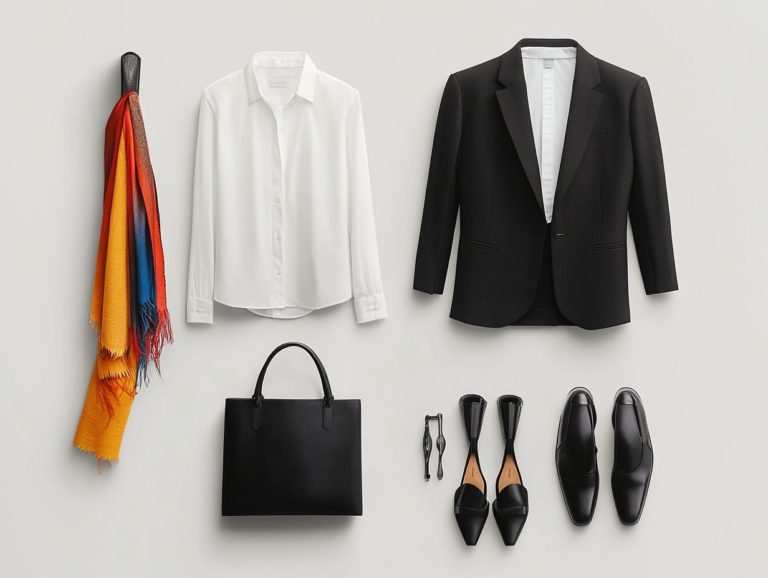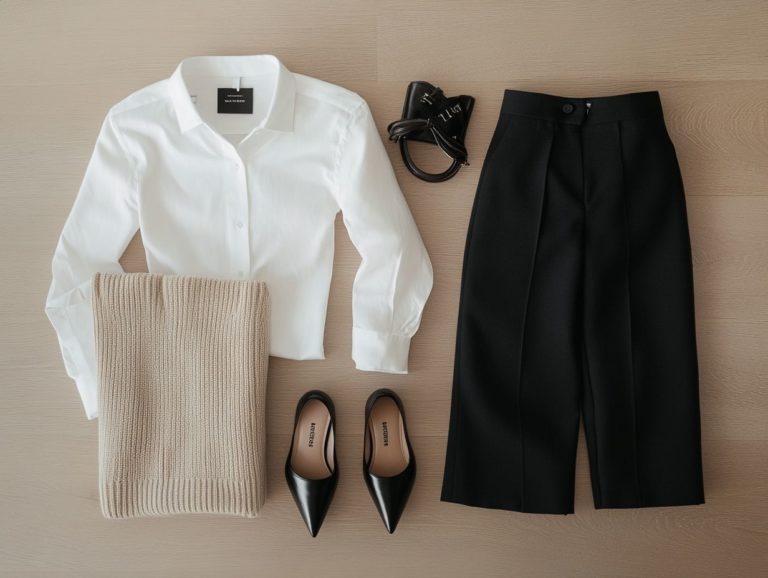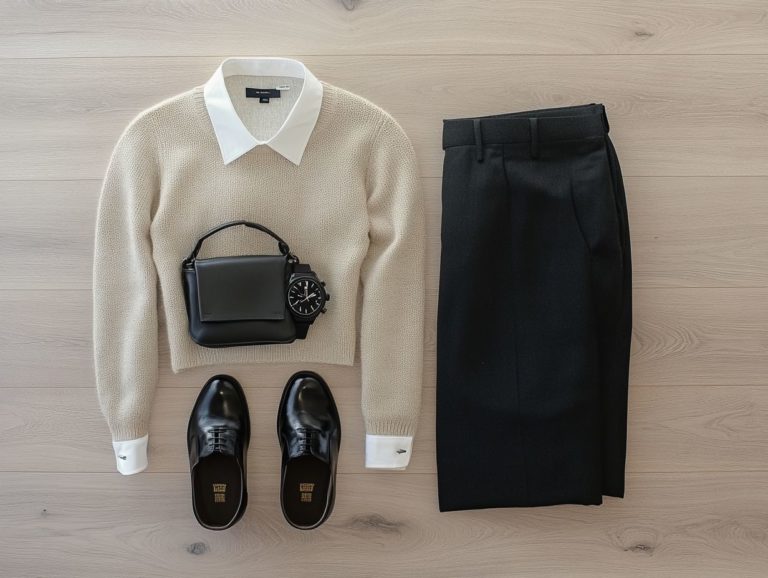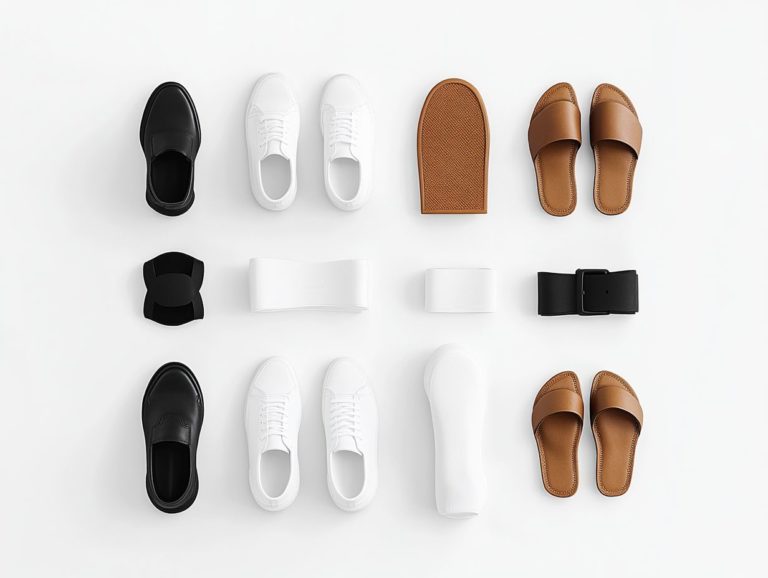Mixing Textures for a Minimalist Look
Minimalist design may initially strike you as stark or overly simplistic, yet it truly comes to life with the thoughtful incorporation of textures. This article delves into the art of harmoniously blending various textures to enhance minimalist spaces, adding depth and interest without succumbing to clutter. You ll learn how to select complementary textures and gain practical tips tailored for different rooms be it the living room, bedroom, or kitchen guiding you in creating a balanced and inviting minimalist aesthetic. Unlock the secrets to achieving your dream minimalist look today, making your space not just stylish but also warm and welcoming.
Contents
- Key Takeaways:
- Understanding Minimalist Style
- Benefits of Mixing Textures
- Choosing Complementary Textures
- Incorporating Textures into Different Rooms
- Maintaining a Balanced Look
- Final Touches for a Minimalist Textured Look
- Frequently Asked Questions
- What is the key to mixing textures for a minimalist look?
- How many textures should I mix for a minimalist look?
- Can I mix different materials when mixing textures for a minimalist look?
- What are some examples of textures that work well together for a minimalist look?
- How can I incorporate texture into a minimalist outfit without adding too much visual clutter?
- Can I mix textures for a minimalist look in a monochromatic outfit?
Key Takeaways:
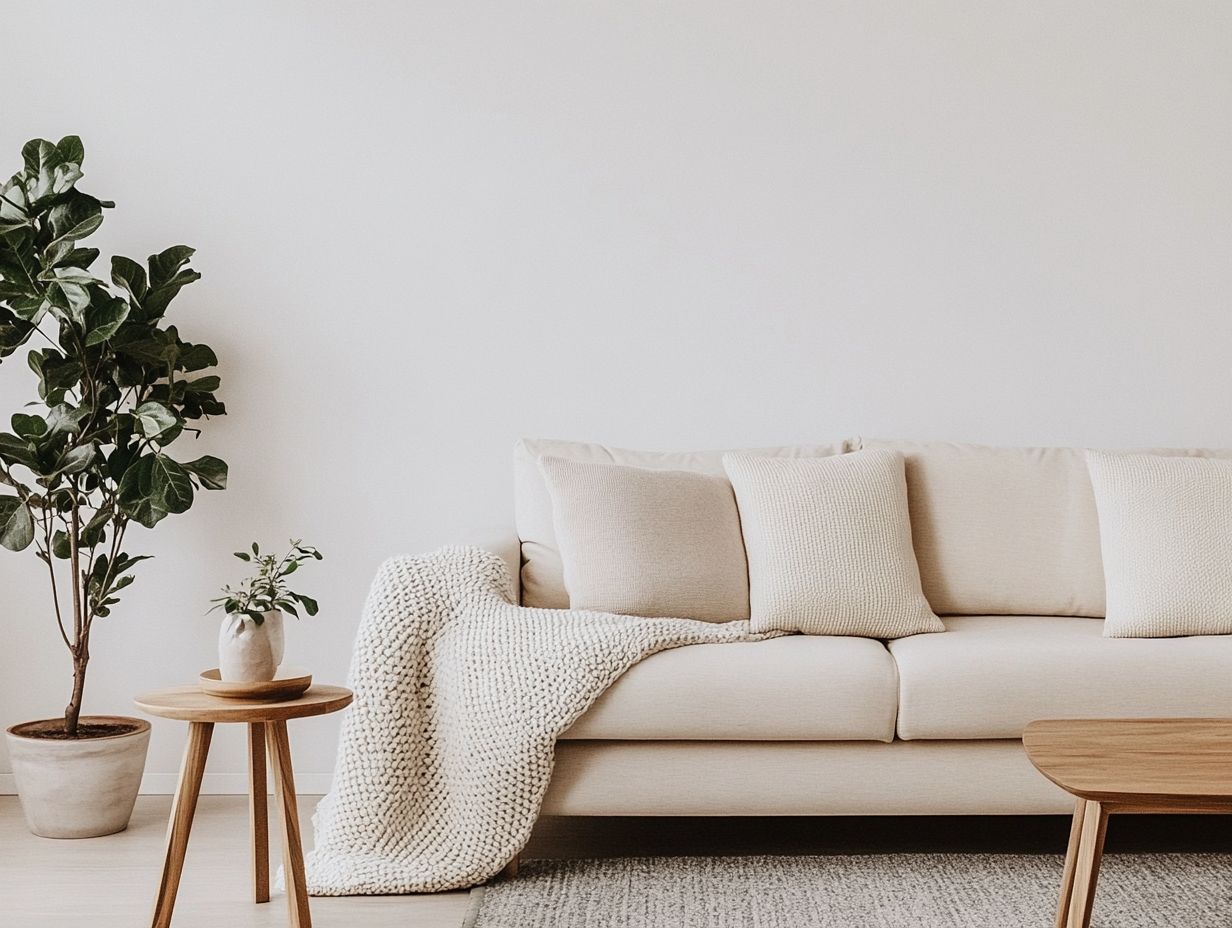
- Minimalist style emphasizes simplicity and functionality in design.
- Incorporating different textures allows a minimalist space to feel interesting and dynamic.
- Choose textures that complement each other, such as smooth and rough or matte and shiny.
- Introduce textures in various rooms, like cozy knit blankets in the bedroom or a textured rug in the living room.
- Maintain balance by avoiding clutter and overwhelming textures.
- Final touches, like accents and finishing details, can tie the textures together and complete the minimalist look.
Understanding Minimalist Style
Minimalist style is a design philosophy that champions simplicity and functionality, elegantly removing the unnecessary to craft a harmonious atmosphere. In fashion, this translates into a wardrobe that embraces neutral tones and structured fabrics, highlighting the beauty of simple textures. By selecting an anchor color and weaving in soft ruffles, you can cultivate a refined aesthetic that embodies minimalism’s core principles, where each piece is thoughtfully chosen for maximum impact.
Defining Minimalism in Design
Minimalism in design reduces form, color, and texture to their most essential elements, creating a clean and uncluttered aesthetic. This approach highlights the harmony that arises when structured fabrics, like canvas or linen, are thoughtfully combined with a restrained color palette dominated by soothing neutrals. The elegance of these materials fosters a sense of tranquility while showcasing exquisite craftsmanship.
Each element you choose serves a purpose, enhancing functionality and cultivating an airy ambiance. Minimalism encourages an abundance of natural light, beautifully emphasizing soft textures and subtle shades, resulting in a space that feels both open and inviting. This design philosophy resonates deeply with anyone seeking calm and intentional living environments.
Benefits of Mixing Textures
Mixing textures is a potent design technique that elevates the visual allure of a space through the artful creation of layered depth and balanced prints especially within a minimalist framework. Carefully select and combine diverse materials, such as structured fabrics alongside softer textures, to achieve a harmonious contrast that captivates the eye and makes a bold statement while maintaining a refined sensibility.
Adding Depth and Interest to Minimalist Spaces
Incorporating various textures into your minimalist space adds depth and elevates the overall design, creating an intriguing interplay of visual elements. This approach invites a thoughtful balance between simplicity and complexity.
For instance, using natural materials like wood, stone, and textiles cultivates a warm, inviting atmosphere. Soft, muted colors enhance this aesthetic, while strategically placed pops of bold hues serve as focal points without overwhelming the space.
Varying the scale of prints and patterns from large wall art to smaller decorative items introduces visual interest. Plus, adding elements like woven baskets, linen throws, or metallic accents contributes to a rich sensory experience, making your environment feel both curated and effortless.
Choosing Complementary Textures
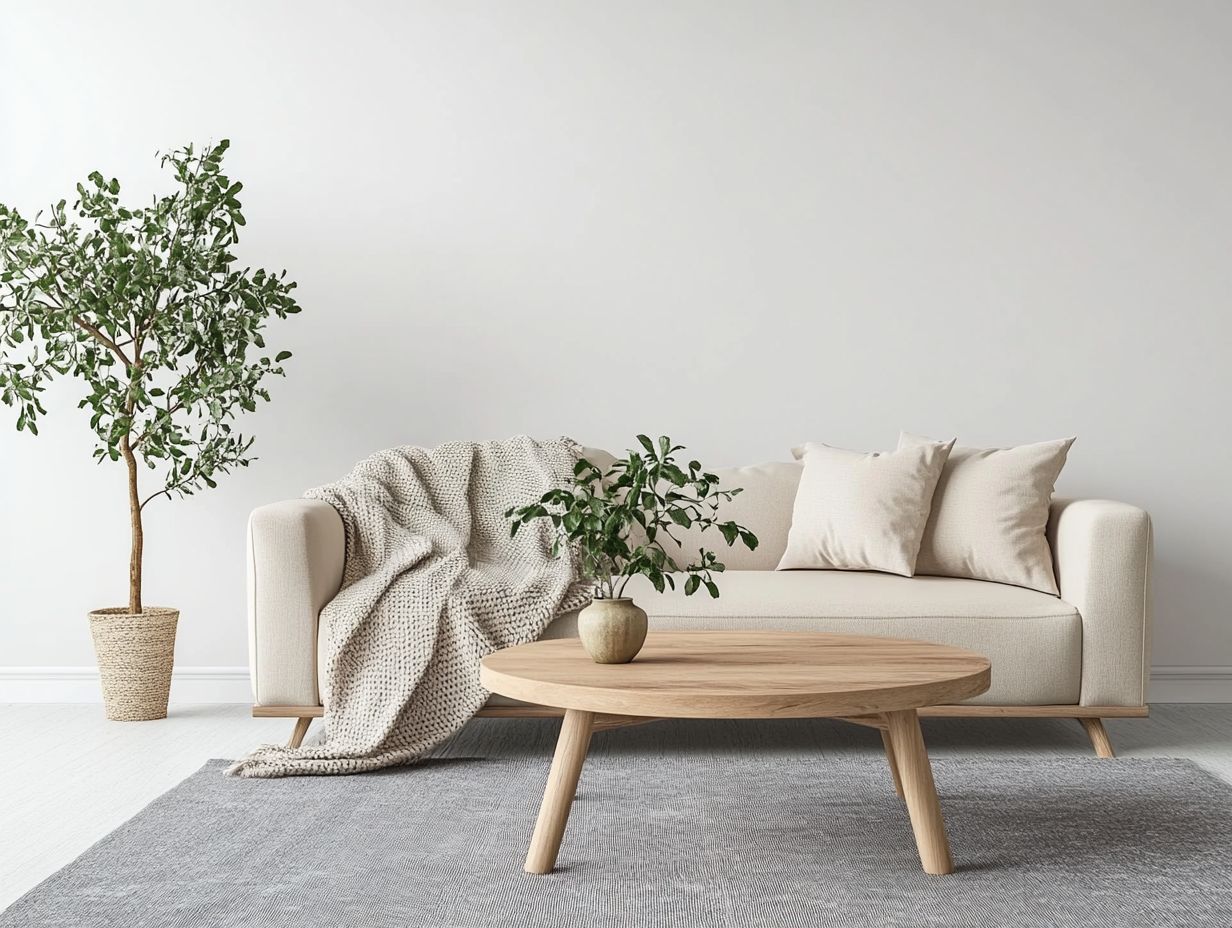
Selecting complementary textures is essential for crafting a cohesive and visually captivating design, whether you re working in fashion or home decoration. The interplay of contrasting textures can significantly enhance the overall aesthetic, creating a harmonious balance that elevates your space or style.
Tips for Selecting Textures that Work Together
When selecting textures, think about the scale of print sizes and how they complement one another. Aim for versatile wardrobe options that allow for themed outfits. Choosing the right textures can elevate any minimalist outfit, creating an appealing visual balance. For example, pairing larger prints with subtler, smaller textures prevents your look from feeling overwhelming while cultivating an air of sophistication.
Aim for cohesive color palettes that incorporate neutral tones to unify different pieces. Each garment should shine on its own while harmonizing beautifully with the overall aesthetic. Keep in mind that texture doesn t merely add depth; it can evoke emotions and set a mood. Selecting complementary fabrics can elevate your entire look.
Incorporating Textures into Different Rooms
Incorporating textures into various rooms of your home requires a thoughtful approach that enhances the overall aesthetic while adhering to minimalist design principles. This can be achieved by skillfully layering depth and contrasting textures. Applying these techniques in spaces like your living room, bedroom, or kitchen can create inviting atmospheres that celebrate the beauty of simplicity and nature, connecting you with your surroundings.
Living Room
Imagine transforming your living room into a cozy yet stylish retreat. Incorporate soft ruffles in throw pillows and quilted jackets to bring warmth and character to your decor. To enhance this inviting atmosphere, drape chunky knit blankets over a sleek leather sofa; it creates a delightful contrast. Adding natural wood elements, such as side tables or exposed beams, infuses rustic charm that complements the overall design.
Incorporate colorful artwork framed with a matte finish to introduce visual appeal and tactile depth. A plush area rug underfoot anchors your seating arrangement and serves as a canvas for layering textures. Think about metallic decor accents or ceramics that harmonize with your color palette, ultimately enriching your living room s overall aesthetic.
Bedroom
Your bedroom is your personal sanctuary, a space to artfully mix patterns and textures that cultivate a tranquil atmosphere. Embrace neutral tones and layer various elements for comfort. Don t hesitate to incorporate subtle animal prints to add a touch of visual interest. In this serene retreat, add plush textiles like velvet throw pillows and a soft woven blanket. These not only elevate the overall aesthetic but also invite you to unwind.
The delightful contrast between smooth linens and rugged knits creates a cozy experience. Gentle patterns think delicate florals or muted geometric designs enhance the sense of calm. To truly embody relaxation, integrate natural materials like jute and bamboo into your decor, fostering a soothing atmosphere that encourages restful sleep.
Kitchen
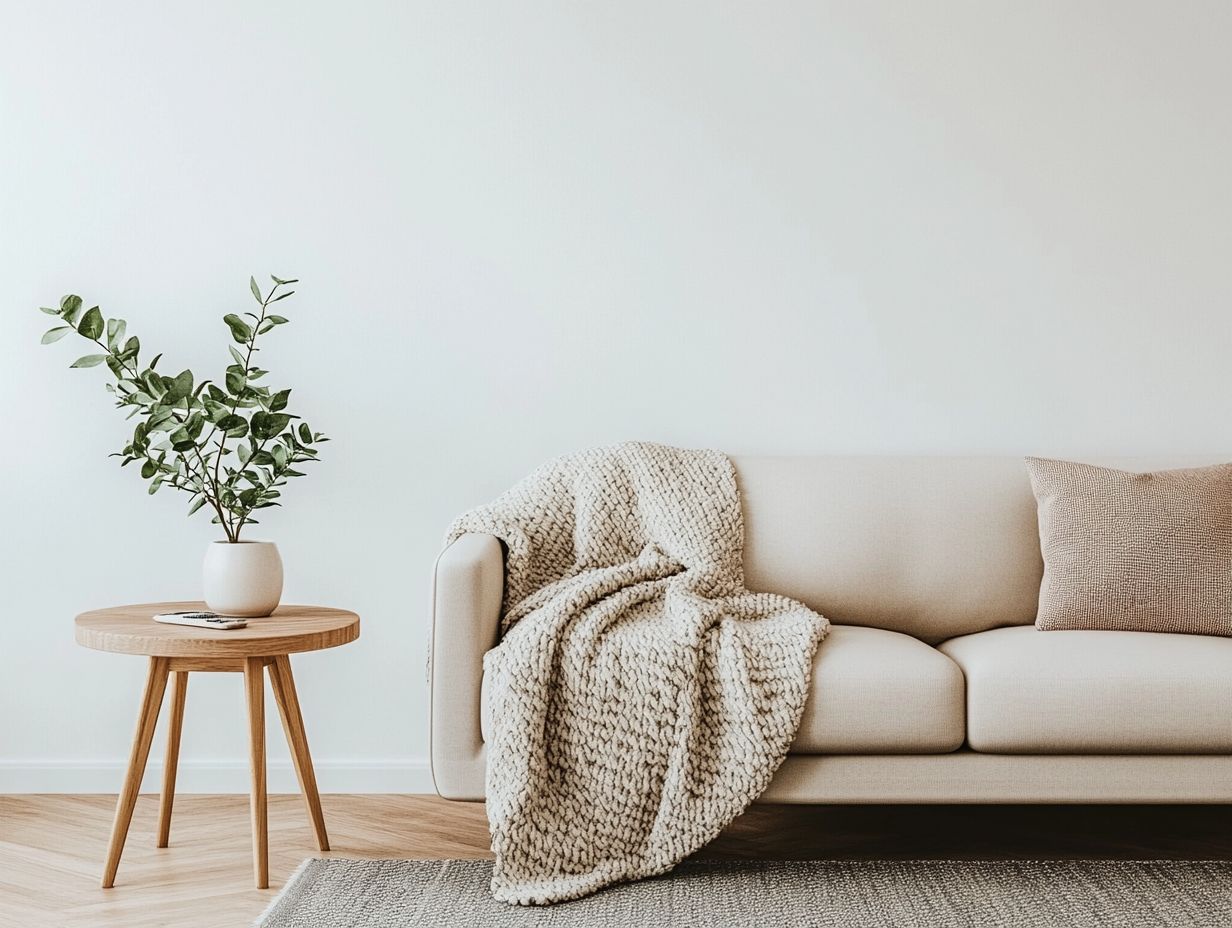
In your kitchen, blending a variety of structured fabrics and textures with visual elements think geometric backsplashes and ceramic accents can elevate both functionality and look.
To create a harmonious design, consider mixing soft linens in your window treatments or table runners with the sleek lines of stainless steel appliances. Introducing wooden elements, like butcher block countertops or a rustic dining table, adds warmth and creates a beautiful balance against the modern features.
Selecting decorative accents like textured wall art or patterned dishware offers layered visual interest. This thoughtful synergy transforms your kitchen into a captivating space that encourages interaction, making it the heart of cooking and social gatherings.
Maintaining a Balanced Look
Maintaining a balanced look in your design is crucial for achieving an inviting minimalist look, free from clutter and busy textures. It s about ensuring that every element has its rightful place and purpose.
By focusing on print balance and thoughtfully selecting textures, you can craft a space that feels inviting yet uncluttered, allowing the beauty of minimalist design to emerge effortlessly.
Avoiding Clutter and Busy Textures
To maintain a visually appealing space, you need to avoid clutter and busy textures. This focus allows for a clearer appreciation of minimalist design and keeping textures simple.
You need to plan intentionally for this. Start by selecting a limited color palette that promotes cohesion, making it easier to blend elements seamlessly without creating visual chaos.
When considering furniture and accessories, choose pieces with clean lines and uncomplicated forms to cultivate an airy atmosphere. Textures play a significant role in your design; incorporating a few well-chosen materials like soft linen or smooth wood adds depth while keeping the senses unburdened.
Regularly reassessing your space is important, so reserve only those items that genuinely spark joy. This practice fosters a serene environment while harmonizing beautifully with layered depth and minimalist aesthetics.
Final Touches for a Minimalist Textured Look
Achieve that coveted minimalist textured look by focusing on key accents that truly shine. Think soft ruffles in your decor or a quilted jacket in your fashion choices.
These elements enhance the overall aesthetic beautifully without overshadowing the primary design.
Adding Accents and Finishing Touches
Adding simple accents can boost your minimalist look. By utilizing elements like an anchor color or a varied wardrobe, you can create cohesive themed outfits that exude a refined overall appearance.
For instance, adding a bold statement piece think a vibrant scarf or a unique pair of shoes can serve as a captivating focal point while preserving the essence of simplicity. In fashion, playing with textures like leather or linen introduces depth to your look, while carefully selected accessories, such as geometric jewelry or structured bags, enhance that clean vibe.
In design, a thoughtfully chosen accent wall or art piece can breathe life into a minimalist room. It s essential to maintain a seamless and intentional theme throughout, reinforcing a well-rounded aesthetic that effortlessly communicates both style and sophistication.
Frequently Asked Questions
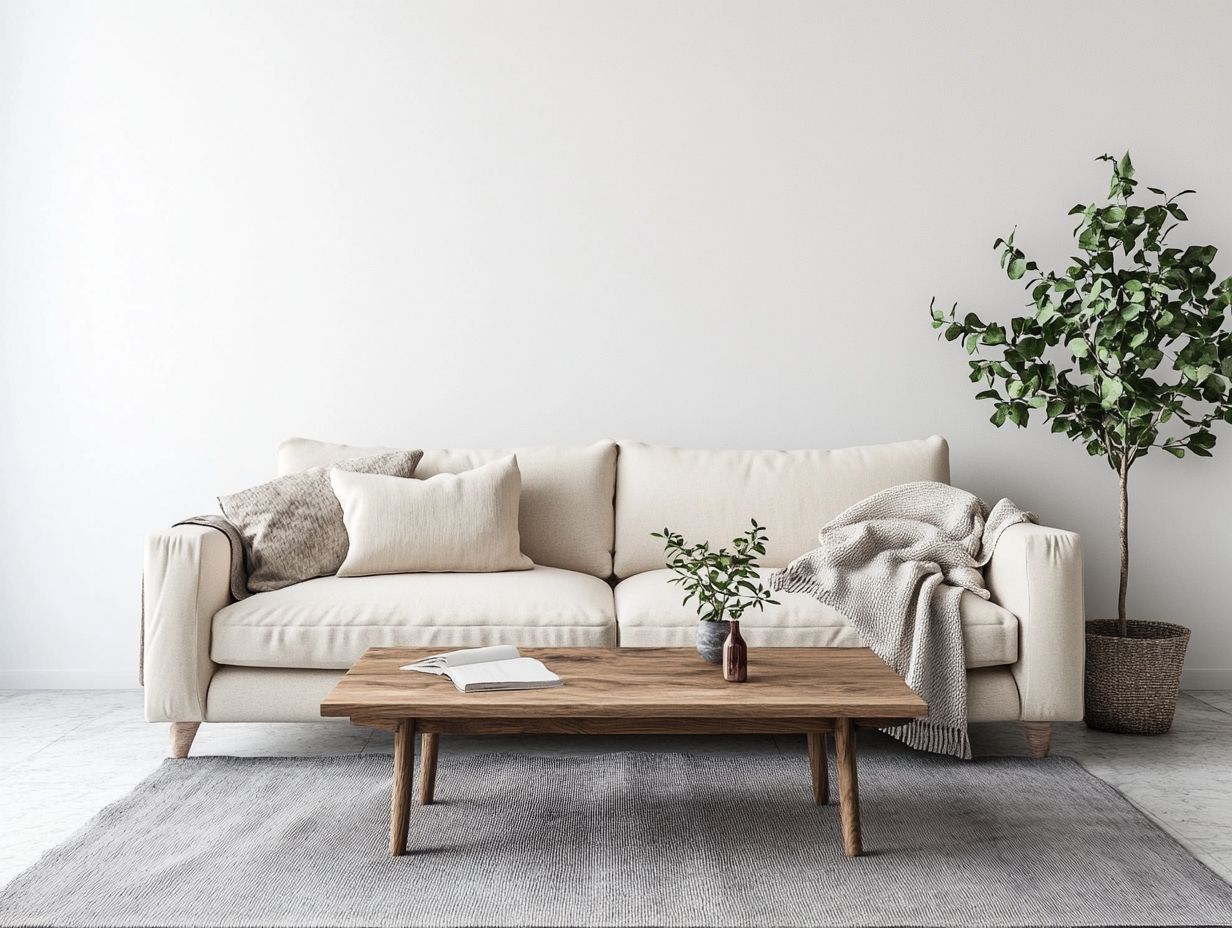
What is the key to mixing textures for a minimalist look?
The key to mixing textures for a minimalist look is to choose a limited number of textures and stick to a neutral color palette. This will create a cohesive and understated aesthetic.
How many textures should I mix for a minimalist look?
It is recommended to mix 2-3 textures for a minimalist look. This will add visual interest without overwhelming the simplicity of the overall style.
Can I mix different materials when mixing textures for a minimalist look?
Absolutely! Mixing materials like leather, cotton, and linen is great as long as they share similar colors.
This will create a harmonious blend of textures.
What are some examples of textures that work well together for a minimalist look?
Great combinations include smooth and rough textures.
Think a silky blouse with a tweed skirt or a leather jacket over a cozy knit.
How can I incorporate texture into a minimalist outfit without adding too much visual clutter?
Add texture to your minimalist outfit by choosing subtle pieces.
A ribbed sweater or a woven handbag works perfectly!
Can I mix textures for a minimalist look in a monochromatic outfit?
Mixing textures in a monochromatic outfit is a fantastic idea!
The key is to vary the shades and tones of the same color to create contrast and depth.


